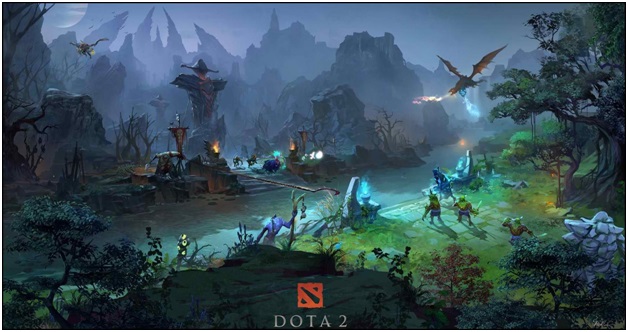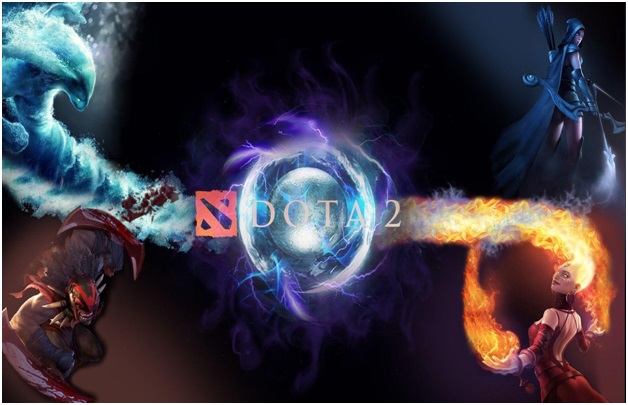Dota 2, a globally renowned multiplayer online battle arena (MOBA) video game, stands as a pinnacle of success and popularity in the gaming realm. Annually, it hosts a sequence of major tournaments known as Dota 2 Majors, where the world’s finest teams converge to vie for substantial prize pools and accolades. These events, brimming with fervent competitive gaming action, have captivated enthusiasts since their inception in 2015.
Exploring the Event
Situated within the heart of Denver, Colorado, the Dota 2 MajorB is an annual extravaganza that celebrates the vivacious culture of hip-hop. It functions as a dynamic platform for local artists to exhibit their musical prowess. Since its inception in 2017, the Dota 2 major B event has displayed consistent growth, a testament to its resonating impact.
Central to the MajorB experience is an electrifying live concert showcasing preeminent rap and hip-hop talents hailing from various corners of the nation. While the lineup varies each year, it invariably features contemporary luminaries like Travis Scott, Lil Uzi Vert, Cardi B, Future, Migos, and more. These headliners are complemented by local artists who grace smaller stages throughout the event’s three-day duration.
Beyond the musical performances, MajorB fosters an environment of creativity and expression. The event showcases art exhibitions and installations, curated by local street artists, employing unconventional mediums such as sculptures crafted from repurposed materials and interactive pieces that beckon guests to engage in the act of creation. Industry experts contribute to the event by sharing insights into their journeys, offering attendees a glimpse into the path of achieving success.
Tracing the Origins of Dota
Dota, an acronym signifying “Defense of the Ancients,” emerged as a multiplayer online battle arena video game brought to life by Valve Corporation in July 2013. The game evolved from the original DotA Allstars mod for Warcraft III, which had been collaboratively developed by independent creators over several years.
DotA Allstars burst onto the scene in 2003, swiftly amassing a global player base on Battle.net. The game pivoted around teams of up to five “heroes” manoeuvring on a battlefield, striving to obliterate opposing strongholds while safeguarding their own. The gameplay melded strategic positioning, skill-driven combat, and the collection of in-game items.
Years of evolution culminated in the 2013 release of Dota 2, boasting improved graphics, diverse game modes, an intricate matchmaking system, and a myriad of heroes furnished with distinctive abilities. This transformed Dota 2 into a quintessential esports title, revered for its annual tournaments and galvanizing gameplay.
Major B. Evolution through Time
Evolution stands as the intricate process underpinning the development of all life forms over countless aeons from a shared progenitor. Major B. Evolution delves into the biological study of this phenomenon, unravelling its influence on organisms across generations. The discipline explores how species diverge in response to their surroundings and why certain creatures flourish while others fade.
Major B. Evolution illuminates the passage of traits through genetic mechanisms such as recombination, mutation, and selection. These processes encompass natural and sexual selection, with genetic drift also shaping the course of evolution. Moreover, Major B. Evolution scrutinizes how external factors like climate shifts and pollution steer the survival prospects of organisms.
Through epochs, scientists have enriched our understanding of evolution via empirical endeavours. In 1859, Charles Darwin introduced the theory of natural selection, which underscores the triumph of advantageous traits within a changing environment. This seminal notion spawned modern evolutionary theory, spawning subsequent revelations like genetic drift and sexual selection.
Unfolding the Esports Tournament Format
Esports tournaments have surged in popularity, captivating millions of viewers as virtuosic players engage in battles of skill and strategy. These events follow a structured format, encompassing qualifiers, group stages, and grand finals. Each phase contributes to the drama and allure of competitive gaming spectacles.
Qualifiers inaugurate the esports journey, requiring participants to vie in online or offline contests to secure entry into the primary event. These qualifiers often categorize players based on regions or skill tiers, guaranteeing the participation of the most proficient contenders. Qualifier victors progress to the ensuing stage – group stages – where confrontations determine advancement.
Group stages involve participants assembled into cohorts of four or five, with top performers advancing while others confront elimination. Within these groups, players compete for positions, a quest that secures coveted slots in the playoff bracket. The playoffs climax in grand finals, where the zenith of skill is showcased in epic showdowns.

Unraveling Prize Pool Allocation
Prize pool allocation has assumed prominence in competitive gaming, as tournaments dangle substantial financial rewards. These distributions pivot on myriad factors, with no uniform blueprint. Nonetheless, certain patterns emerge, emphasizing rewarding top achievers while accommodating broader participation.
Traditionally, a major portion of prize pools showers winners from the upper echelons – typically the first four placements. This practice balances recognition for excellence with financial incentives, securing players’ sustained participation. These top-ranking contenders commonly receive 50%-70% of the total winnings.
The remainder of the prize pool is dispersed among lower placements, accentuating inclusivity and fostering competition throughout the roster. This strategy blends recognition and motivation, underscoring that esports success extends beyond the champions.
Dota’s Resonance in the Gaming Sphere
Dota, also known as Defense of the Ancients, commands a towering presence in the gaming arena. Since its 2003 inception, the game has continued to draw millions of players worldwide, influencing the gaming industry and popular culture in profound ways.
Foremost, Dota’s imprint on competitive gaming looms large. As a pioneer in esports, it was spotlighted at events like The International, a landmark tournament with staggering prize pools. This catalytic circuit propelled esports into mainstream awareness, incubating professional gamers and inspiring titles like League of Legends and Overwatch.
Dota’s design legacy is equally impactful. As a foundational MOBA, its influence reverberates across contemporary gaming. A progenitor of a genre now cherished globally, Dota’s design principles resonate in countless MOBAs, crystallizing its pivotal role.
Majors: Pillars of the Gaming Community
The gaming community’s growth has been meteoric, fusing leisure with competition and camaraderie. Professional gamers, colloquially known as Majors, embody this evolution. These elite players excel in major tournaments such as The International and EVO, amassing fan bases and substantial earnings.
Majors transcend boundaries, adeptly navigating diverse games and genres. Their prowess extends to streaming platforms, augmenting their reach. What sets Majors apart is their constant pursuit of excellence across titles, a testament to their dedication.
Culmination and Impression
To conclude, Dota 2 Majors stand as pinnacles of esports prestige and popularity. They foster esports’ ascension and empower players to showcase their talents. As Dota 2 Majors influence burgeons, their narrative will undoubtedly intertwine with esports’ overarching trajectory.
